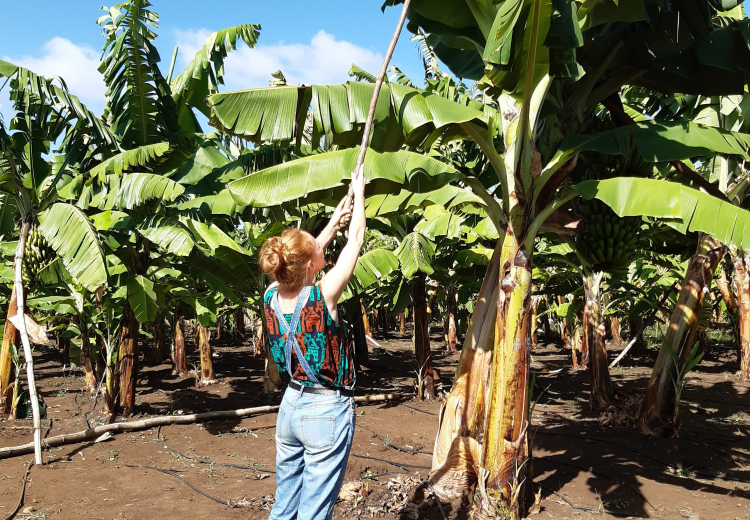Groundwater is water found underground between spaces in soil, sand and rock, which is stored in and moves slowly through aquifers. According to the Global Water Partnership of Central America, in parts of Central America, groundwater is the primary water resource, due to the decline in quality and quantity of surface water resources, including freshwaters in rivers, lakes and reservoirs. This is largely due to El Niño - Southern Oscillation (ENSO), a periodic fluctuation of ocean surface temperature and air pressure that is linked to periodic droughts and flooding.
“ENSO events and subsequent water scarcity have resulted in food insecurity after suffering major crop losses in these areas,” said Lucia Ortega, IAEA Isotope Hydrologist. “The dependence on seasonal rainfall and groundwater recharge for agriculture, tourism, hydropower and a rapid demographic growth have further amplified the use of groundwater resources.”
The increased use of groundwater has highlighted the need to better understand factors affecting rainfall patterns and the links between groundwater recharge and discharge – the movement of water from surface water to groundwater and vice versa – to improve water management. Isotopic tools have been key in a new IAEA regional study to assess the interaction between rainfall inputs and the direction and magnitude of water flow above and below ground in Costa Rica, El Salvador, Honduras, Nicaragua and Panama.
Preliminary results of the study, published in 2020, can provide the information decision makers need to protect and conserve critical recharge zones to ensure water security and sustainability.
In the Middle East and North Africa, many countries depend on groundwater resources, as well, due to the lack of surface water. “Many countries – especially those with scarcity of freshwater resources – depend on groundwater as a source of drinking water and also for irrigation,” said Horst Monken-Fernandes, IAEA Environmental Remediation Specialist. In an ongoing project supported by the IAEA’s technical cooperation programme, isotope analysis and environmental remediation specialists helped experts in Jordan to measure and monitor the concentration of radium – a naturally occurring radioactive material (NORM) – in groundwater sampled from the Ram aquifer, and to explore options for the water’s treatment.
Natural processes, which are controlled primarily by the local geology and geochemistry, can lead to the contamination of groundwater by natural radionuclides, Monken-Fernandes explained. The project is supporting the construction and installation of a water treatment unit using hydrous manganese oxide to remove radium from water. Read more about the project. The IAEA is also supporting experts in Libya in groundwater management with respect to enhanced concentration of natural radionuclides.







